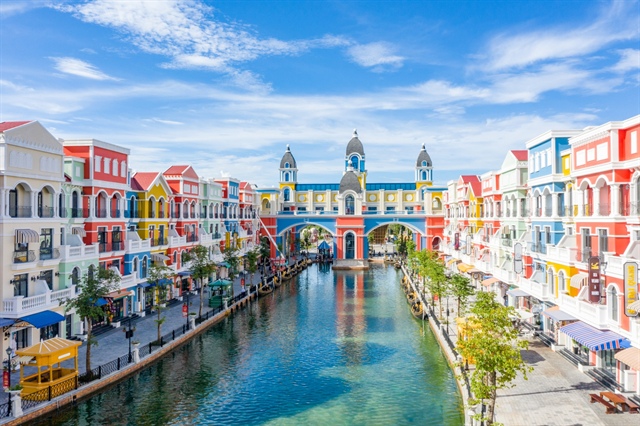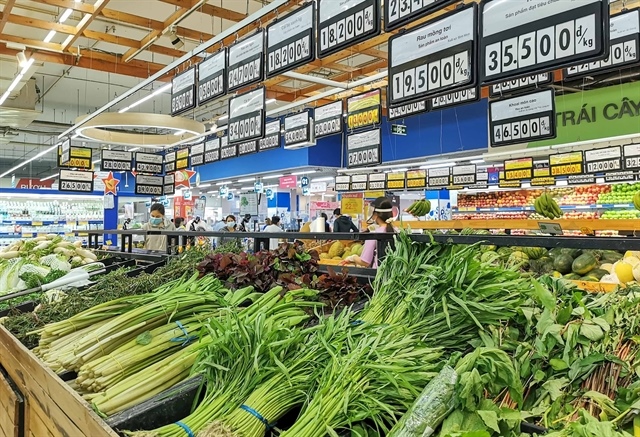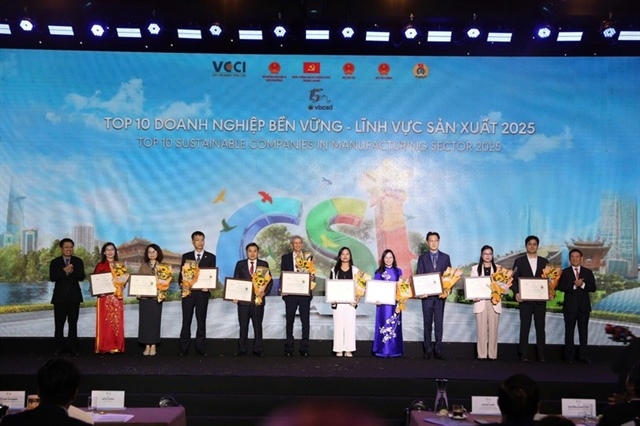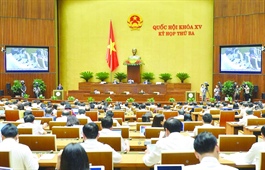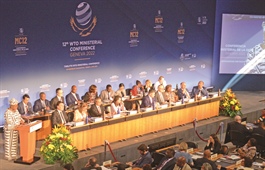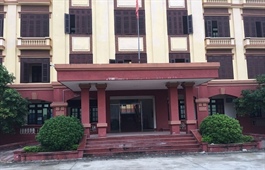Vietnam’s economy to grow more than 6.5 percent in 2022
Vietnam’s economy to grow more than 6.5 percent in 2022
The economic recovery path chartered across the South-East Asian region has been uneven and must now contend with rising external headwinds from outside the region. Despite that, average growth of about 5.8 percent is expected for the region, according to the latest forecast presented at ICAEW Economic Insight Forum Q2.
Even though recovery across the South-East Asian region has been uneven with the Delta variant, most countries’ GDP including Singapore, Indonesia, Malaysia, the Philippines and Vietnam have risen back up to pre-pandemic levels – with the exception of Thailand, which is still at 2 percent below pre-pandemic levels as its tourism industry struggled with travel and mobility restrictions.
It was noted that Vietnam was not particularly affected by the Delta variant wave, and hence did not experience large lockdowns that impacted its economy as much as Malaysia and the Philippines did. Singapore, on the other hand, was able to take advantage of the increase in demand for consumer electronics globally to increase its GDP growth by 7.6 percent last year.
Across the region, there is a marked lag in the recovery of the services sector in terms of accommodation, food and retail, but that is expected to increase with the reopening of borders and easing of travel restrictions. However, China’s zero Covid policy and rolling lockdowns had an impact on Thailand, whose tourists are mostly Chinese.
Other external headwinds include supply chain disruptions and weaker demand from China due to its lockdowns, as well as impacts on inflation and commodity prices resulting from the ongoing Russia-Ukraine war. Despite that, the view ahead is fairly optimistic, with the region being forecast to grow by about 5.8 percent which is 3.7 percent up from last year. This can be attributed to the boost across the economies’ tourism sector from the opening of borders and loosening of measures.
|
Vietnam was able to bounce back quite quickly in 2021 as compared to the rest of the region. With the easing of restrictions from last year’s Q4 that carried over to this year’s Q1, there has been a significant recovery in its services sector driven by domestic tourism. There should be a boost on the international tourism front with the current endemic phase, as travellers return to Vietnam. Realised foreign direct investments inflow this year should also provide support for construction performance and labour, and also achieve export capacity which still remains healthy.
Singapore’s growth of 7.6 percent last year was largely driven by the manufacturing and export sector, but that growth has since been moderated with a significant downward trend over the past few months. Its food and beverage service index has not returned to pre-Covid levels and is also still around 20 percent lower than it used to be.
However, a big uptick in retail sales and accommodation services in March was observed and with the easing of restrictions and containment measures, signs of a broader recovery for the services sector are expected to appear. It might still be a long way to catch up, but a couple of factors such as increase in earnings and the stemming of inflation will help to support this recovery.
Earnings have increased above 6 percent year on year in Q1, along with a fairly high personal savings ratio. Tight labour market conditions have resulted in the unemployment rate falling back to below pre-pandemic levels. These can help to strengthen household spending and domestic demand on the back of easing restrictions.
Despite inflation being historically high, it is expected to peak and start to drop off, as tightening measures are to be expected in Singapore from the Monetary Authority of Singapore.
Notwithstanding the slowdown in industrial production and weaker export volume due to the lockdowns in China, Singapore’s expected growth at 2.9 percent will be largely driven by the services sector. Even though it is down on last year’s very strong growth of 7.6 percent, this growth will be a lot more even among the sectors and result in a more broad-based recovery.
Mark Billington, ICAEW Managing Director International, said: “Even though the direct exposure of the Russia-Ukraine war on South-East Asia is limited, the region is impacted through inflation and monetary policy response on a global level. China’s zero Covid policy has also triggered a domino effect in terms of negative impact to the region’s manufacturing, industrial and tourism sectors. Without a doubt, these external headwinds will dampen growth but will not derail it, as we expect to see recovery in the services sector as we learn to live with Covid.”
Key findings from the Economic Forecast were presented by Sian Fenner, Lead Asia Economist at Oxford Economics at the ICAEW Economic Insight Forum Q2 2022 on 2 June 2022. She was joined by other panellists Julia Leong (FCA), Partner of PwC Singapore; Rafizi Ramli (FCA), Founder of Invoke Solutions; and Van Anh Huynh from Microsoft Vietnam in an insightful discussion on the prospects of an economic recovery for the region as it gradually pivots from pandemic to endemic, including factors such as tight labour market conditions and capacity of manufacturing experts.


